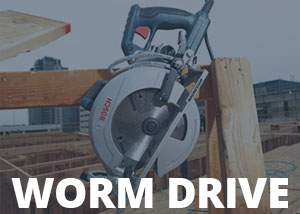Best Sidewinder Circular Saw in 2024 — Buyers Guide, Review, and Comparison
Product Comparison Table
| IMAGE | PRODUCT | DETAILS | ||
|---|---|---|---|---|
|
Best for Speed 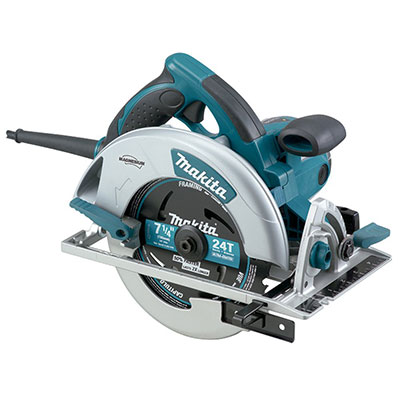
|
Best for Speed
|
Makita 5007MG
|
Features
|
Check Price at AmazonMakita 5007MG Review Makita 5007MG Review |
|
Best for Control 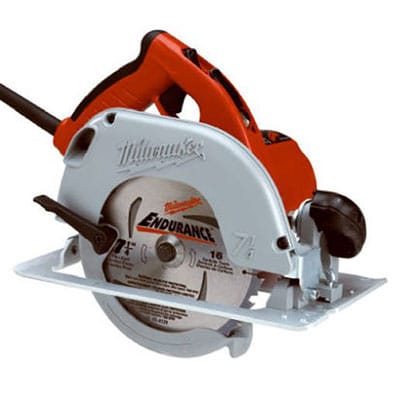
|
Best for Control
|
Milwaukee 6390-21
|
Features
|
Check Price at Amazon Milwaukee 6390-21 Review Milwaukee 6390-21 Review |
|
Best for Large Lumber 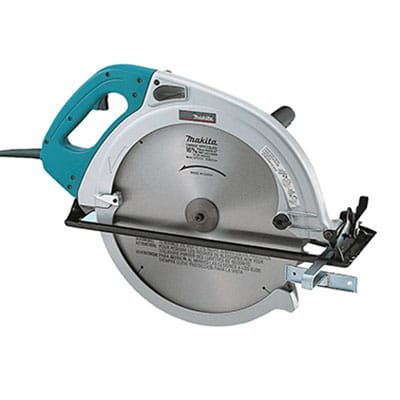
|
Best for Large Lumber
|
Makita 5402NA
|
Features
|
Check Price at AmazonMakita 5402NA Review Makita 5402NA Review |
|
Best for Accuracy 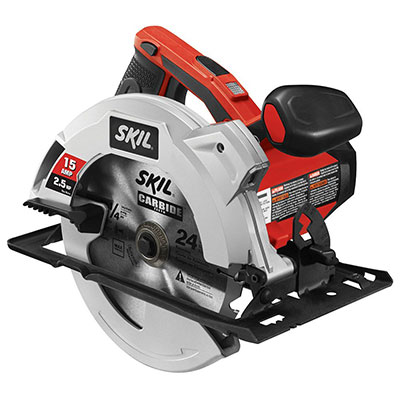
|
Best for Accuracy
|
SKIL 5280-01
|
Features
|
Check Price at AmazonSKIL 5280-01 Review SKIL 5280-01 Review |
|
Best for Heat Dissipation 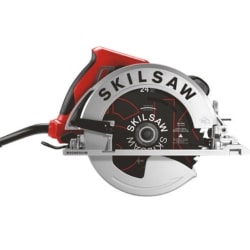
|
Best for Heat Dissipation
|
SKILSAW SPT67WL-01
|
Features
|
Check Price at AmazonSKILSAW SPT67WL-01 Review SKILSAW SPT67WL-01 Review |
|
Best for Line Visibility 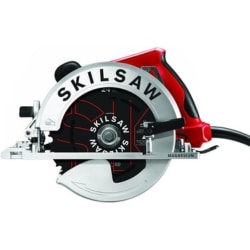
|
Best for Line Visibility
|
SKILSAW SPT67M8-01
|
Features
|
Check Price at AmazonSKILSAW SPT67M8-01 Review SKILSAW SPT67M8-01 Review |
|
Best for Balanced Cutting 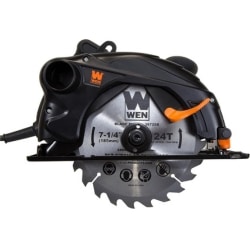
|
Best for Balanced Cutting
|
WEN 36725
|
Features
|
Check Price at AmazonWEN 36725 Review WEN 36725 Review |
|
Best Track Saw 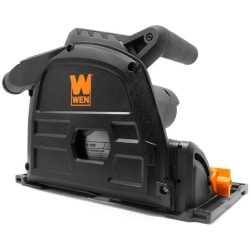
|
Best Track Saw
|
WEN CT1065
|
Features
|
Check Price at AmazonWEN CT1065 Review WEN CT1065 Review |
Best Sidewinder Circular Saw Buying Guide
Compact, powerful, and relatively lightweight — sidewinder circular saw units are as suited to the enthusiastic DIYer as they are to the trade pro.
With the motor located to the side of the blade — hence the name — the size of the machine is reduced, elevating portability. Furthermore, since the motor directly powers the cutting edge, this ensures greater power efficiency compared to hypoids and worm drives.
A sidewinder saw is suitable for a variety of applications. For example, if you’re a devoted enthusiast who tackles an occasional home project on weekends, this particular type of saw might be the thing you need. Sidewinders are also well-known for being easy to use, set up, and maintain.
Admittedly, these machines don’t do as well as other types when it comes to demanding and large projects that require immense brawn — such as cutting stacked wood in a single pass. For extreme dense material cutting, check out the worm drives and hypoids.
When selecting your perfect sidewinder saw unit, consider:
- Power.
- Blade size.
- Weight.
- Ease of use.
- Safety features.
Before You Buy: How a Sidewinder Circular Saw Works?
When you squeeze the unit’s trigger, power is delivered to the motor, which, in turn, rotates the blade. Using an internal variable resistor, the more you depress the trigger, the lower the resistance, and the higher the turning speed.
This basic system — without gears, drive belts, cranks, and additional engine housing — ensures that the sidewinder is compact, relatively lightweight, affordable, and straightforward to wield.
It’s for these reasons, circular sidewinder saws are the most popular machine with DIYers who demand effortless operation and trade pros that move frequently from site to site.
How To Choose the Best Circular Sidewinder Saw
When choosing your ultimate sidewinding saw, think about the following:
Power
The motor is the crucial part of every sidewinder saw. There are plenty of variations available on the market, but the 15-amp ones are your safest bet with a rotating speed of around 5000 rpm.
That said, there are some impressive lower rpm units on the market — where the rotating speed is stepped down in favor of accuracy and torque. Hence, if you’re addressing hardwood in precision cabinet making, it can be worthwhile to consider a lower rapidity machine.
Blade Size
Despite men’s magazines and online forums trying to convince you differently — size is important. That’s true whether you’re buying a car, planning hardcore bedroom action, or buying a sidewinder saw.
The diameter of the blade determines the maximum depth your cutting machine can penetrate — unsurprisingly, the larger it is, the further you can dive in. Buy the mother-of-all sidewinders — and you can plow through stacks of wood.
However, some people prefer a more compact piece of equipment.
Smaller blades — working from an identical motor — will rotate faster than larger blades, delivering a smoother cutting edge.

Weight
Weight is a big part of the overall experience. If you buy a heavy unit, it might help on certain occasions, but it causes fatigue. On the other hand, if you purchase a lightweight machine, it might lack stability. The key is in finding a solution that suits your preferences and requirements.
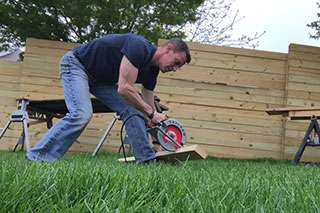
Ease of Use, Design, and Build Quality
Even though the design is more a matter of personal preference, there are some things you should avoid. For example, try to steer clear of all-plastic units because they tend to malfunction, even if it’s hard plastic. Metal parts are better than plastic ones, but magnesium is the optimal solution thanks to its integrity and durability.
Someone once said, no matter what you do, you’ll drop your saw at some point, and they were right. So go for a machine that offers reassuring durability.
Safety Features
As long as you operate a sidewinder saw in accordance with the manufacturer’s instructions — and use basic common sense — accidents are unlikely.
Opting for a machine that includes numerous safety features can reduce risks and increase your overall user experience. I suggest checking whether your machine incorporates:
- Blade guard — shielding your valuable fingers from cuts and amputations.
- Electric brake — rapidly brings the blade to a halt when you release the trigger.
- Dust blower/extractor — removing visibility obscuring dust and debris.
- Safety lock — ensuring the blade cannot be accidentally started.
- Textured grip — increasing your handhold to prevent slippage.
Our Top Rated Sidewinder Saws
With a plethora of units available, separating the seriously impressive from the totally disappointing can be challenging. Therefore, to save you the time of scouring the internet and reading through 100s of reviews — I’ve picked out the ultimate sidewinder saws.
Remember, your ideal sidewinder depends on your preferences and the demands of your current and future projects. Below, my top picks offer excellent tools for a variety of skill and experience levels and job types.
Makita 5007MG

- Design
- Functionality
- Price
And, when it comes to absolute weight reduction, this machine is near the top — thanks to its magnesium components. When durability is in question, magnesium components are the way to go due to their superior integrity in comparison to plastic elements.
The safety is satisfactory, as it is with most other Makita products. The two built-in LED lights illuminate the cut path so you’re aware of the blade’s position at all times.
The cutting capacity of this 7.5-inch blade unit is admirable. Furthermore, the bevel capacity is zero to 56 degrees, with positive stops at 22.5 and 45 degrees. And thankfully, you won’t need any tools to fine-tune and adjust the bevel thanks to the inbuilt innovative levers.
In my opinion, this is an investment-worthy unit for devoted DIY-ers, but it might lack some auxiliary features required by some professionals.

- Design
- Functionality
- Price
Milwaukee 6390-21

Our Rating: 4.5
- Design
- Functionality
- Price
Milwaukee 6390-21
Our Rating: 4.5
As far as the ease of use goes, this model is probably among the simplest on the market. It’s a great product for devoted enthusiasts because it offers useful features for a more than acceptable price.
The design is pretty conventional and quite functional. The 15-amp motor knocking out a mighty 3.25 HP delivers 5800 rpm at no-load speeds — meaning it will cut through pretty dense wood without breaking a sweat.
Built from aircraft aluminum and hard plastic, the unit offers durability combined with relatively lightweight construction. And, its helical steel gears ensure power efficiency and reliability.
Perhaps the only downer with this sidewinder saw is that the handle isn’t cushioned — which can increase vibration transfer to your hand.
Makita 5402NA

Our Rating: 4.4
- Design
- Functionality
- Price
Many circular saws nowadays have a pretty complex design. If you’re looking for a simplistic yet efficient power tool, the 5402NA model might be a perfect choice. It features an electric brake, a large cutting capacity, and low noise levels of around 87 dB.
Apart from the basic functions, it also features a blade stabilizer, which comes in handy for prolonged use. It’s safe to say that this machine works great both for professionals and DIYers — although admittedly, it’s more of a trade unit.
Bear in mind that due to the immense blade size and grunty output — it’s at the expense of speed. Providing a relatively modest 2300 rpm from its 15-amp motor, it’s not ideal for long and repetitive jobs that demand rapidity. Furthermore, weighing around 32 pounds, fatigue could be an issue if you’re challenged in the strength department.
SKIL 5280-01

Our Rating: 4.6
- Design
- Functionality
- Price
SKIL 5280-01
Our Rating: 4.6
There are plenty of affordable 7.5-inch blade models on the market, but most of them lack some of the crucial features needed for precise and smooth cuts. However, the 5280-01 model comes with features that are more than enough for simple projects such as cutting laminate and beams.
Its integrated dust blower removes line-obscuring and annoying dust and detritus, further increasing your cutting accuracy. And, delivering 5300 rpm from its 15-amp motor, it’s pleasingly rapid for the pro and home enthusiast.
Weighing 10.1 pounds, it’s slightly on the hefty side for a compact sidewinder saw, mainly due to the additional features — which also includes a welcome safety lock to prevent accidental activation of the tool.
SKILSAW SPT67WL-01

- Design
- Functionality
- Price
Length is important — exemplified by the unit’s mammoth 10-foot power cord. Permitting you to operate at an impressive distance from electrical outlets, it’s a useful feature if you’re working on lumber that’s tough to relocate.
Pushing out 5300 rpm from its 15-amp motor, the 7.5-inch blade receives sufficient grunt to drive through most hardwoods and plywoods. Yet, despite this impressive brawn, the unit weighs only 8.6 pounds — thanks to its magnesium components.
For added safety, the SPT67WL-01 includes a powerful electric brake, and boasts an extensive blade guard.

- Design
- Functionality
- Price
SKILSAW SPT67M8-01

- Design
- Functionality
- Price
SKILSAW SPT67M8-01
Promising best-in-class torque from its 15-amp motor, the SKILSAW knocks out 5300 rpm — able to address the densest of plywood. And, with dual-field motor tech that ensures efficient heat removal — internal components are protected despite its mighty brawn.
With a majority magnesium build, the unit offers you reassuring durability, while keeping the weight to a modest 10.6 pounds. And, featuring a brushless motor to drive its 7.25-inch blade, this sidewinder ensures power efficiency.
In addition to the tool, you also receive a 24-tooth cutting blade, tool wrench, and manual — allowing you to operate the unit straight-outta-the-box.
WEN 36725

- Design
- Functionality
- Price
Fitted with a 7.25-inch, 24-toothed cutter — this unit slices effortlessly through 2.5-inch lumber — making it ideal for fencing, framing, and stud wall projects. And, since the blade can bevel through 0-45 degrees, you can create the perfect miters.
An inbuilt depth stop ensures your plunge cuts reach the pinnacle of penetration perfection. Furthermore, with a rear dust extractor port, your work can be sucked free of dust and detritus.
Weighing 8.7 pounds — lightweight for a sidewinder — the machine is unlikely to create premature fatigue. Perhaps the only downer is the relatively modest 4500 rpm delivered from its 12-amp motor — although, this grunt is more than adequate for most DIY jobs.

- Design
- Functionality
- Price
WEN CT1065

- Design
- Functionality
- Price
WEN CT1065
Allowing the 6.5-inch bladed machine to glide along tracks (purchased separately), this unit offers the precision and ease of operation delivered by large and costly table format cutters.
Its 10-amp motor — relatively modest for a power saw — still delivers a welcome 5500 rpm. This permits the tool to drive through 2.33-inch lumber impressively rapidly, making it suitable for your shelving, door-trimming, and furniture-building projects.
The main tool can be removed from the tracks and utilized as a standalone sidewinder unit. Furthermore, its zero to 45-degree bevel facility allows you to create the perfect angle or miter on your timber.
The conclusion
All of the models that I’ve covered are here for a reason. Some are great for speed enthusiasts, like the Makita 5007MG — while others are perfect for large lumber, such as the 5402NA.
Most of them are quite affordable, and even accessible to people on a strict budget. Therefore, whether you’re an absolute beginner or an experienced professional, you’ll find something of interest here.
If you want more information about a particular sidewinder circular saw model, feel free to read our full reviews in which we describe the products with more in-depth information and details.
Circular Sidewinder Saw FAQs
Q: What’s a Sidewinder Circular Saw?
Incorporating a rotating circular blade, a sidewinder saw is a handheld electric power tool that has its motor mounted to the side of the cutting edge. Using direct-drive tech, it offers greater efficiency and balance than other circular saws.
Q: What Is the Difference Between Worm Drive and Sidewinder Saws??
A sidewinder saw has its motor positioned parallel to the blade, whereas a worm drive has its engine behind — or inline — with the cutting blade. That said, both saws are handheld circular saws.
Q: Is Worm Drive Better Than Sidewinder?
Generally speaking, worm drives offer more grunt while sidewinders deliver greater speed. Additionally, sidewinders are more compact, but worm drives promise a more even balance.
Q: Can I Use a Sidewinder Saw To Cut Miters and Bevels?
Yes. The majority of sidewinder circular saws have a bevel feature, permitting you to adjust the cutting angle from zero to 45 degrees.
Q: Can I Cut Metal With a Circular Sidewinder Saw?
You can cut thin steel and aluminum with a sidewinder, as long as you have a metal-compatible HSS (high-speed steel) blade fitted. For thicker steel and dense metals, you need the brawn of a worm drive saw.

